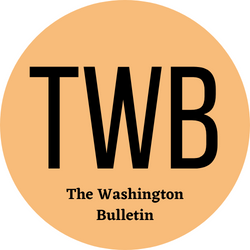Exploring the Harmony of Yin and Yang: A Journey through Traditional Chinese Medicine

In the ancient wisdom of Traditional Chinese Medicine (TCM), the concept of yin and yang serves as the cornerstone of understanding health, balance, and the natural order of the universe. Rooted in the philosophy of Daoism, yin and yang represent complementary forces that are interconnected and interdependent, manifesting in all aspects of existence, including the human body and its ailments.
The Dance of Yin and Yang
At the heart of TCM lies the belief that the body is a microcosm of the larger cosmos, and like the natural world, it strives for harmony and equilibrium. Yin and yang are symbolic representations of the dynamic balance between opposing but complementary energies.
Yin embodies qualities such as darkness, coldness, stillness, and substance. It represents the nourishing, feminine aspect of existence, associated with organs like the kidneys, liver, spleen, heart, and lungs.
Yang, on the other hand, embodies qualities such as light, warmth, activity, and function. It represents the assertive, masculine aspect of existence, associated with organs like the gallbladder, stomach, small intestine, large intestine, and bladder.
Yin, yang, life, and death. In the essence of yin and yang, life and death intertwine, reflecting the cyclical rhythm of existence. Together, they form a dynamic balance, guiding the flow of life from birth to death and back again. In the pursuit of a meaningful life, embracing the harmony of yin and yang fosters resilience amidst life's challenges, encourages acceptance of impermanence, and imbues existence with depth and purpose. Death, viewed as a natural transition within this cosmic dance, offers a return to yin's embrace, symbolizing a passage to the primordial void and honoring the continuum of life beyond the boundaries of time and space. Through the interplay of yin and yang, individuals find solace in the beauty of transformation, cultivate legacies of wisdom and compassion, and embrace the mystery of life and death as integral parts of the universal journey.
Understanding Yin and Yang Stagnation
In TCM theory, health is believed to be maintained when the flow of qi (vital energy) and blood is smooth and unobstructed. However, imbalances can occur, leading to stagnation of either yin or yang energies, disrupting the body's equilibrium and giving rise to various health issues.
Yin Stagnation occurs when the cooling, nourishing aspects of yin energy become stagnant or deficient. This may manifest as symptoms such as insomnia, anxiety, cold extremities, menstrual irregularities, dryness of the skin and mucous membranes, and a general sense of emptiness or depletion.
Yang Stagnation, on the other hand, occurs when the warming, active aspects of yang energy become stagnant or excessive. This may manifest as symptoms such as agitation, restlessness, palpitations, digestive disturbances, excessive sweating, flushed complexion, and a feeling of heaviness or fullness.
In the context of yin and yang, qi stagnation can be seen as a disruption in the balance between the active, outwardly expressive qualities of yang and the nurturing, inwardly reflective qualities of yin. When qi stagnates, the harmonious interplay of yin and yang is disturbed, leading to disharmony and imbalance within the body. Addressing qi stagnation involves restoring the smooth flow of energy through techniques such as acupuncture, herbal medicine, dietary therapy, and mind-body practices, thereby promoting balance and harmony between yin and yang energies.
Restoring Harmony: Balancing Yin and Yang
In TCM, the goal of treatment is to restore the harmonious interplay of yin and yang energies, thereby promoting health and well-being. Various modalities are employed to address yin and yang stagnation and rebalance the body:
1. Acupuncture: By stimulating specific acupuncture points along the body's meridians, acupuncture promotes the free flow of qi and blood, addressing stagnation and restoring balance between yin and yang.
2. Herbal Medicine: TCM herbal formulas tailored to individual constitution and patterns of disharmony can nourish yin, tonify yang, and regulate the flow of qi, helping to alleviate stagnation and restore equilibrium.
3. Dietary Therapy: Emphasizing foods that nourish yin or yang, depending on the individual's constitution and presenting patterns of disharmony, can support the body's natural ability to regulate yin and yang energies.
4. Mind-Body Practices: Practices such as qigong, tai chi, and meditation cultivate mindfulness, promote relaxation, and facilitate the smooth flow of qi, helping to alleviate stress and rebalance yin and yang.
5. Lifestyle Adjustments: Adopting a balanced lifestyle that incorporates adequate rest, regular exercise, stress management techniques, and healthy dietary habits can support the body's innate ability to maintain harmony between yin and yang.
By embracing the timeless wisdom of yin and yang, individuals can embark on a journey of self-discovery and healing, fostering a deeper connection with the rhythms of nature and unlocking the potential for vibrant health and vitality.
In the ancient wisdom of Traditional Chinese Medicine (TCM), the concept of yin and yang serves as the cornerstone of understanding health, balance, and the natural order of the universe. Rooted in the philosophy of Daoism, yin and yang represent complementary forces that are interconnected and interdependent, manifesting in all aspects of existence, including the…
Recent Posts
- My Insurance Agent TX Urges Drivers in Midland Odessa to Opt for Adequate Auto Liability Coverage Over State Minimums
- Prestige Exteriors Leading the Way in Zanesville Ohio Roofing
- Unlocking Potential: Maximizing Space in Northern Virginia’s Compact Interiors
- Prestige Exteriors Offers Expert Canton Roof Repair Services
- Prestige Exteriors Offers Expert Canton Roof Repair Services
